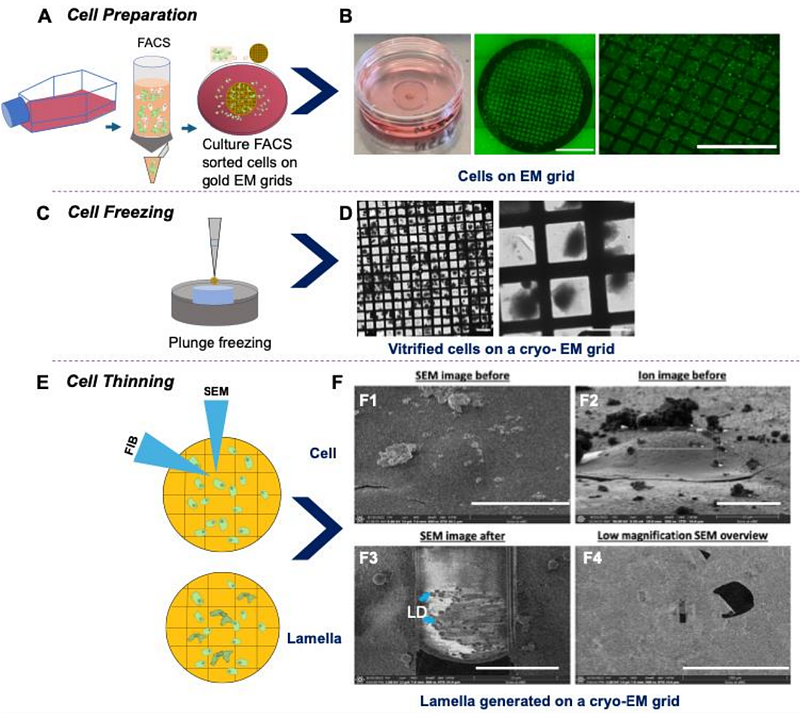The architecture of membrane structures involved in hepatitis C virus genome replication revealed in close-to-native conditions by cryo-electron tomography

The architecture of membrane structures involved in hepatitis C virus genome replication revealed in close-to-native conditions by cryo-electron tomography
Sykora, U.; O'Sullivan, T. J.; Halfon, Y.; Fontana, J.; Harris, M.
AbstractHepatitis C virus (HCV) infection induces extensive rearrangements of host cytoplasmic membranes, leading to the formation of multiple membranous structures that facilitate RNA replication. Current knowledge of these membranous structures has largely relied on correlative light and electron microscopy (CLEM) techniques using chemical fixation and resin embedding. To overcome these limitations, cryo-preserved cells were prepared using cryo-focused ion beam (cryo-FIB) milling and cryo-ultramicrotomy. For the first time, the contents within the membranous structures have been observed in-situ using cryo-electron tomography (cryo-ET) performed on lamellae (prepared via cryo-FIB) and on ultrathin sections (prepared via cryo-ultramicrotomy) from HCV subgenomic replicon harbouring cells. Observations from 112 cryo-electron tomograms of cryo-FIB-derived samples revealed the presence of densities within the inner vesicles of a subset of single-, double-membrane vesicles (SMVs, and DMVs respectively), as well as within multi-vesicular bodies (MVBs), which might represent the viral replication machinery. Notably, this study represents the first direct visualisation of the arrangement of non-structural proteins within a multi-membrane vesicle (MMV) observed from cryo-electron microscopy of vitreous sections (CEMOVIS). The cryo-ET methodologies established here lay the groundwork for future investigations into the architecture of the HCV replication complex, leveraging advanced computational tools for deeper structural and functional analysis.